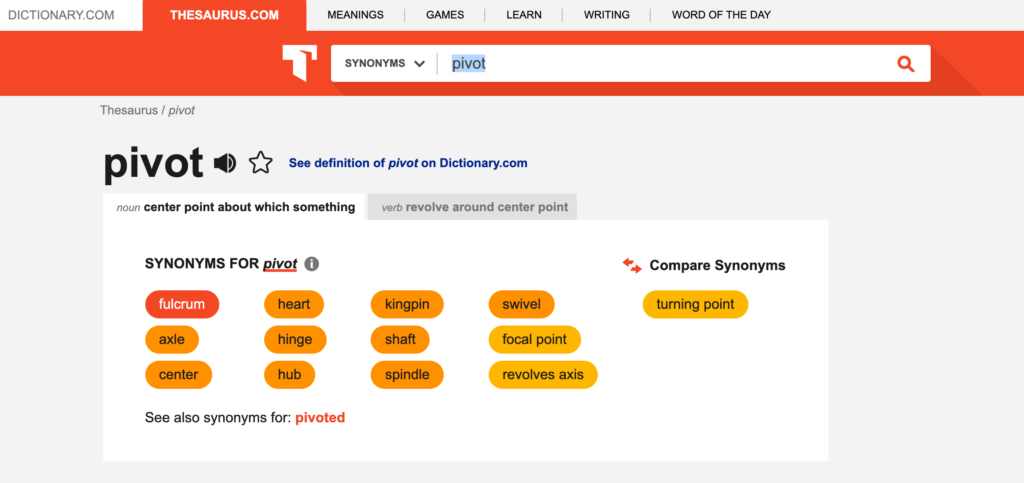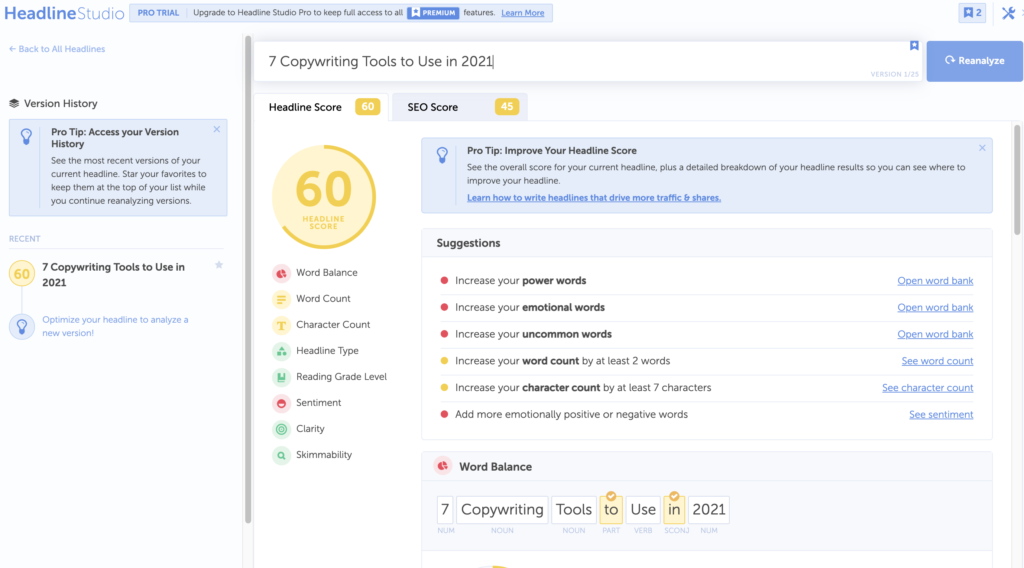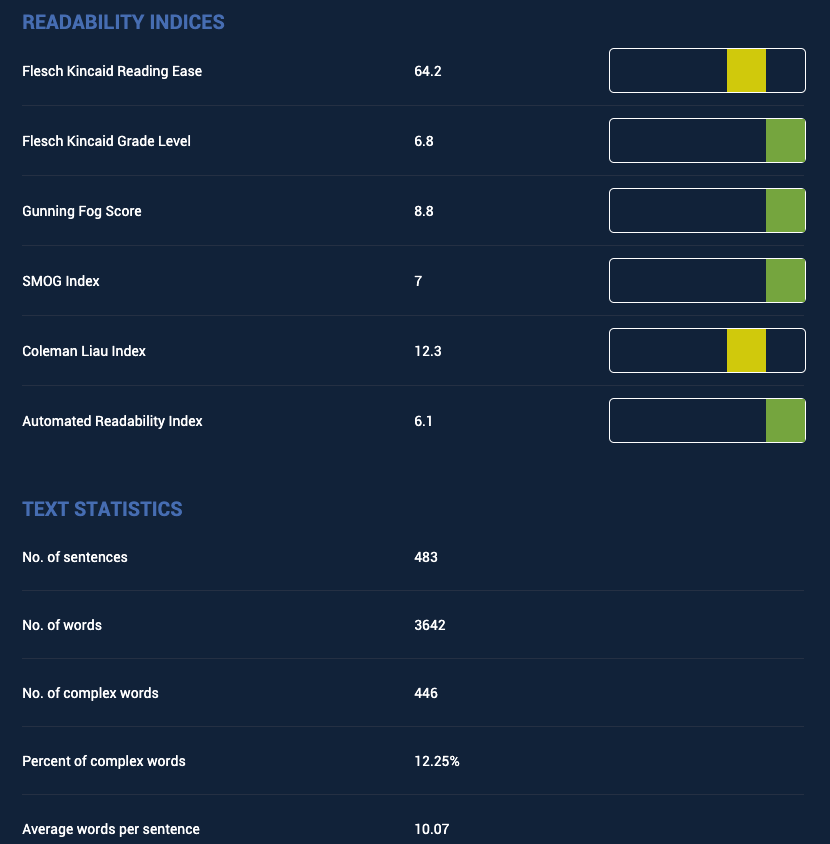We are living in an age of content. From short form content (think: social media posts, ad headlines) to long form content (think: blog posts, website copy), what used to be a buzzword is now the norm.
Be it to generate awareness or to drive conversions, content and well-written marketing copy are a critical part of almost every marketing touchpoint imaginable.
Content marketing as a growth strategy exploded in the late 2000s and has only been accelerating since then. With the increasing amount of content available online today, the need for effective, informative copy is greater than ever before. The challenge is twofold: first, to generate large amounts of content to meet the increasing speed of consumer demand, and second, to write quality content that drives high-intent organic traffic to stand out from the existing noise and fluff that crowds the web. The challenge of ensuring both quality and quantity of content therein poses the question: how should brands and marketers rise up to the challenge given the immense amount of investment, dedication and effort that good copywriting requires?
What is AI copywriting?
AI copywriting is the process of using natural language processing software combined with machine learning capabilities to generate content for blog posts, social media, emails, scripts, and much more.
Content written by AI copywriters is meant to sound like a human wrote it, but making it takes only a fraction of the time. Now, is trustworthy and can it fully replace a content writer? As written on Forbes by David Pawlan, “don’t depend on this technology to do your job—let it simply strengthen your performance.” He recommends to use AI as one of the many copywriting tools to use but be careful. Today, there are still a lot of unknowns as to what the world of AI copywriting and its implications on SEO are. What we believe to be true today may look radically different a year from now.
For the purpose of this article, we won’t be covering any AI copywriting tools to use that exists. Although, we might write something int the future about ChapGPT since everyone talks about it nowadays.
Let’s get back to the purpose of this article. Nowadays, copywriting became a mix of
- Personal and technical copywriting knowledge
- Using the right tools: Utilizing software to increase productivity and streamline your copywriting
In this, you’ll learn about both because we are covering:
- 8 Copywriting tools to use in 2023
- 5 Copywriting techniques and formulas that we use
- Email subject line copywriting: Get your emails opened
- Call to action copywriting: Write CTAs that gets clicked
- Blog copywriting: How to write conversational copy
8 Copywriting Tools to use in 2023
1. Grammarly
Poor grammar and spelling mistakes are the worst enemies of a good copy.
Even if you have the best product or service in the market, no one will trust it if your messages are filled with grammar and spelling mistakes.
Sometimes such mistakes are not made intentionally.
Regardless of your language level, I recommend using Grammarly as a tool that checks your copy and highlights the mistakes you’ve made.
It’s an excellent, free Chrome, Safari, and Firefox extension that checks your spelling and grammar on Facebook, LinkedIn, Twitter, Gmail, G-Doc, WordPress, and almost everywhere else on the web.
The Grammarly extension scans your text for all types of grammatical mistakes and improvements.
It highlights your copy’s problematic words or expressions and offers you replacements and explanations for all your mistakes.
If you’re using the premium version of Grammarly, you can set up the settings and goals of your copy, so the extension recommends corrections and improvements to help you achieve your copy’s goals.

2. Thesaurus.com
Having variety in your choice of words is extremely important. Yet, sometimes it’s challenging to come up with the proper expression.
Especially when the language you write in is not your mother tongue.
That’s when having a thesaurus by your side or in the next tab pays off. Use it to find synonyms, antonyms, or just look up definitions.

As a copywriter, you need to diversify your vocabulary. One exercise that I was personally doing when I started writing for marketing purposes, is that every day I learn a new word that I didn’t know before and use it in my copy.
By the end of the month, you’ll be surprised by how many new words you can use to avoid repetition or make your copy more compelling.
3. Copysmith
Copysmith is an AI writing platform that offers many different tools and features for content writers. You can use it to generate ad content, long-form blog articles, web copy, marketing content, and more.
Copysmith also has some cool integrations, like an integrated plagiarism checker and an SEO keyword integration powered by Frase.
Pros
- Copysmith generates high-quality content
- Many different writing tools available
- Decent value for money
- Includes keyword and plagiarism integrations
- Uses data scraping to gather information on each project
Cons
- The affordable plan has very limited credits
- The content still needs a human touch
4. Headline Analyzer
Coming up with an awesome headline for your amazing copy is not easy. Especially if you’d like that headline to drive traffic, shares, and search results. That’s what CoShedule’s Headline Analyzer promises.
The guys over at CoSchedule put a lot of resources into researching what makes an awesome headline.
And put all that in one easy-to-use analyzer. You have to type or copy your headline into the field, click ‘Analyze Now’ and it gives you an easily digestible report.

At first glance, you’ll see an overall headline score and tips on how to improve your title.

Running titles by your supervisor or boss leaves you with opinions.
So using this tool eliminates biased opinions or ideas and scores your headline and provides valuable insights.
5. Hemingway App
The Hemingway App is a proofreading solution designed to help users enhance the writing style by highlighting adverbs, passive voice, as well as dull and complicated words. The application enables students to analyze the grade level of text using an automated readability index (ARI). It tells you valuable information about your copy. Among basic info like letter, character, word, sentence, and paragraph count it also shows you the reading time and the grade level.

BUT, the real value of this app is that it highlights common writing mistakes with a different color so you know what to fix.
- Yellow means that the sentence is hard to read
- Red means that the sentence is very hard to read
- A purple highlight tells you that a word has a simpler alternative
6. Read-able by WebPageFX
As the name would suggest Read-able is a readability test tool that uses widely accepted readability formulas to evaluate your copy’s readability.
All you have to do is paste your content URL or text and click “Calculate readability” and you’ll receive a report similar to this one below.

I’m sure you’re not writing content that you’re mailing to people. So if your content is getting published somewhere online make sure to test it for readability.
With the increase of mobile users, your content must be readable on both devices, desktop and mobile.
7. RhymeZone
The RhymeZone mobile app is a fast, powerful rhyming dictionary and thesaurus that you can use anywhere, even if you’re not on the net. Quickly find rhymes, near rhymes, synonyms, antonyms, homophones, similar sounding words, words with the same consonant pattern, and other related words (generalizations, specializations, words appearing in the same context).
It helps you find rhymes, synonyms, sentences, and so much more.

8. Jarvis.ai
We live in a time where the world is evolving at an unprecedented rate.
Technology has become so advanced that we can now automate tasks like copywriting and marketing message generation.
Jarvis.ai is a tool that can help you write faster, more compelling marketing messages for your business with less effort on your part.
Jarvis.ai is one of the many tools that can help you become more productive, and marketing messages are just some of its areas of expertise.
The tool uses an artificial intelligence engine to generate unique content for your business in any industry or niche: it’s a great copywriting assistant.
And I highlight the part of assistant because if you don’t have the necessary knowledge to write compelling marketing messages for your business, then Jarvis.ai will not magically save the day – but it can definitely help.
It includes copywriting formulas that I cover in the next section, and takes into consideration your input to generate relevant copy that you can use for:
- Blog articles
- Email copy
- PPC ads
- Press release

We use Jarvis to overcome writers’ block.
So if you struggle with copywriting or even coming up with ideas for your business from time to time, this tool might just be the answer you need.
Bonus of copywriting tool to use!
We must include here Microsoft Word and Google Docs: These word processing tools provide a reliable and familiar environment for writing and editing your copy. They offer features like spell-check, grammar-check, formatting options, and collaboration capabilities.
Next, you will find 5 copywriting techniques and formulas that we use daily when writing blogs and articles.
5 Copywriting techniques and formulas that we use
Now that we learned what copywriting tools to use on our daily content generation, we will describe some good techniques that we use when generating content:
1. B.A.B: Before, After, Bridge
“Before, after, bridge” is one of the top used copywriting techniques. It helps you be relatable to the reader and get them to imagine the outcome of using your product or service.
It mainly consists of the following:
Before – You present a problem the reader might be experiencing.
After – You show how implementing your product or service will solve that problem, and provide value to them.
Bridge – You introduce your product or service and how it helps the reader solve their problem.
Though this technique can be time-consuming, it will allow you to have a more personal connection with the reader and improve conversion rates.
This technique is used to keep their attention on what they just learned from reading about your product/service and also make sure they know exactly what you want from them as an outcome after reliving the situation at hand through this copywriting technique.
Here is an example of Before, After, Bridge:
Before – You are frustrated because it takes you a whole week to write and publish a blog post.
After – Imagine if you can write and publish a blog post in 1 day and use the rest of the week to engage your customers and focus on the more important stuff.
Bridge – There are many ways you can achieve that, read our copywriting guide and use the recommended tools to save your time and speed up your copywriting process.
Smooth isn’t it?
Think of all the problems that your product or service can solve, then accordingly use this framework to craft compelling messaging that you can use on:
- Your website sales pages
- Your blog articles
- PPC ads
- Emails
2. AIDA: Attention, Interest, Desire, Action
The AIDA framework is very useful for getting your readers hooked.
It keeps their attention on your content by making sure they understand what’s in it for them and why they should care about this particular message from you.
This technique consists of:
Attention – Summarizing the problem or pain point that triggered their interest in reading further down into your content.
Interest – Showing how potential customers can benefit if they use your product/service (motive).
Desire – You have to build up desire inside the reader with a call-to-action at the end of each paragraph where you ask questions like, “Are you ready for more?” or “What are other benefits that can come from using our product/service?”.
Action – You have to make them take the next step, which is performing the desired action.
This copywriting framework has been used by marketers and business owners in order to get major conversion rates when sending emails promoting their products/services. Make sure you apply this technique before writing something new!
3. PAS: Problem, Agitate, Solution
The PAS framework is used in order to get the reader’s attention and make them understand what problem they are facing right now.
It works by:
Problem – You have to be very specific when stating a problem that your audience might be experiencing or has experienced before, which will allow you to build up empathy with your readers.
Agitate – Once you’ve stated the problem, it’s time for you to rant about how awful their current situation is (agitating).
Solution – You introduce your product/service and discuss all the benefits of implementing this solution to solve the problem.
This copywriting technique can also work if done properly because not only does it show them clearly where their problems lie, but it also motivates them to take action and implement your product/service.
Now let’s get into another copywriting technique that you should be using today!
4. FAB: Feature to Advantage to Benefit
A lot of products, especially technical ones fail at explaining their product in a language that anyone can understand.
Sometimes it’s because the product is very technical, or simply the copy is written by someone with a technical background.
The average reader who’s frustrated, usually looking for a solution that speaks to them directly and solves their issue. Not a technical description that they can’t get the hang of, and ends up bouncing them back.
For that, the FAB formula comes in handy.
This formula is designed to make technical products, features, services easier to understand from readers’ perspective.
Let’s take the example of a car company that wants to highlight the ABS breaks feature. Here is how it would go.
| Feature | Advantage | Benefit |
| ABS breaks. | Faster more responsive breaks. | Safer trips for you and your family. |
For instance, if you’re a parent driving your kids to school every day. Do you care if it’s ABS brakes or other types?
What you care most about is the safety of yourself and your kids.
And for that, using the FAB formula makes your messaging more understandable by any reader regardless of their background.
Make a table like the one above, list all your features for each one, write advantage and benefit.
I personally do this with every product/service I’m writing for, and I call it translating features.
Your audience might not speak features, but they definitely speak advantage and benefits ????
5. The “You” technique
The “You” technique is all about addressing the reader directly, like saying “you”, which is a great way of building up empathy with your readers because it makes sure they know exactly who you’re writing for.
It also helps with increasing conversion rates by making them feel as if you are talking just to them in order to convert at this very moment.
This technique is used by many copywriters, including me.
It’s true that you’re not having a direct in-person conversation with your readers, but by using the “You” technique, you make your copy more conversational and your readers would feel included.
Conclusion about the right copywriting tools to use
Writing effective copy is a true art and it takes practice to master.
With the right tools, you can stay on track while creating content that resonates with your audience.
Remember these copywriting techniques and tools to write copy that makes maximum impact.
Although copywriting tools are wonderful, they are not without flaws. To make it match your brand voice and audience, you’ll need to use human creativity. Some AI copies may be strange, not human-like, or even inaccurate. So, it’s not wise to do away with human copywriters from your team. Human emotional intelligence is essential in a fast-paced and fiercely competitive digital world. Evidently, integration of human and artificial intelligence is the best copywriting asset!

